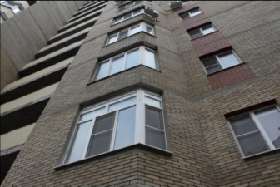Russian multi-storey apartment house gets a facelift

Investor
Homeowners' Association "Tsvetok"

Location
Rostov-on-Don, Russia

Investment
Insulation of joints between wall panels, replacement of the missing parts of the façade, replacement of the roof’s coating and sealing of the joints.

Investment Size
RUB 6 million

Impact
No heat losses and leakages; improved comfort

Donor
Austria

The Homeowners’ Association “Tsvetok” (HOA) was organised by the residents of a 20-storey apartment building constructed in 2008. Soon after the building was fully commissioned, the residents discovered numerous defects of the outer walls and the roof. The joints between wall panels were not insulated well, leading to residents suffering from cold. In addition, the roof coating had splits resulting in rain leaking through.
The HOA decided to apply for the RuSEFF Residential loan via the Center-invest bank to finance the building modernisation measures. The repair of the building’s defects required costly works and without external financing the residents would not be able to implement them. The RuSEFF team supported the HOA with analysis of the proposed technologies, the potential for energy savings, the financial-technical parameters and the risks of the project.
The investment of around RUB 6 million allowed the HOA to perform a comprehensive repair of the building façade and roof, including insulation of joints between wall panels, replacement of the missing parts of the façade, replacement of the roof’s coating and sealing of the joints.
This project resulted in elimination of thermal bridges, heat losses and leakages, and restored the comfortable living conditions in the apartments.
Nina Vorozheeva, Chairman of the HOA said:
“It was impossible to restore the sound condition of such a big building (more than 300 apartments) without capital investment from outside. Considering the inflation rate, which exists now, the decision to get a loan was the best option”.
The EBRD, through RuSEFF Residential, supports the implementation of sustainable energy projects by the residential sector.



